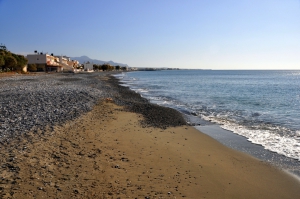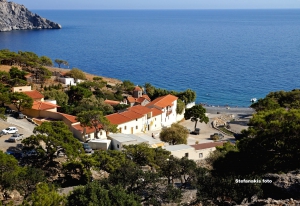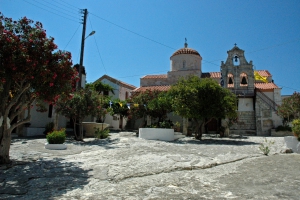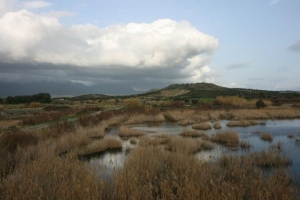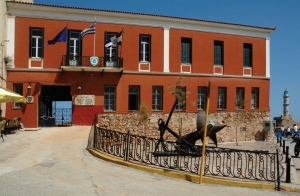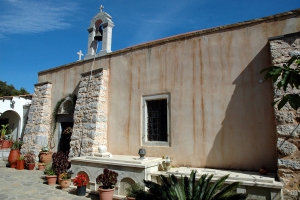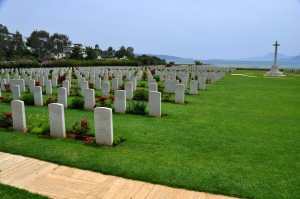Gra Ligia is a seaside village located just 5km west of Ierapetra and 39km south of Agios Nikolaos. It is situated at the exit of a large fertile valley, which is full with greenhouses with early vegetables. Locals were the first to grow vegetables in greenhouses and this was later extended throughout the area of Ierapetra. There are so many greenhouses, that locals call Gra Ligia as “Silicon Valley of Greece”.
Koudoumas monastery is located at the exit of Katarraktis gorge in Asterousia Mountains, 80km south of Iraklion and only 40m from a beautiful beach. It is one of the most secluded monasteries of Crete, as access from Heraklion requires 2.5 hours. There is a safe 24km long dirt road that starts from the village Sternes (accessible from Charakas), at an altitude of 1000m near the peak Kofinas (1231m).
The Monastery of Prophet Elijah (Profitis Elias) is built above a hill with panoramic views, 20km south of Rethymno, next to Roustika village. It is a relatively unknown monastery throughout Crete, although it was founded in the Venetian Era and belongs to the most historic convents on the island.
Geropotamos, the sacred river of the Minoans, gathers the water of Mesara Plain and exits inside the military airport of Tymbaki, close to Kokkinos Pirgos. The coastline south of Kokkinos Pyrgos has several places where small ponds of foremost ecological importance are formed, with the nicest being at the area of Pahia Ammos (or Afratias), which can be accessed through dirt track.
At the entrance of the port of Chania is situated the Venetian Fortress Firkas, where on December 1st 1913, the Greek flag has been hoisted, sealing the union of Crete with the motherland Greece.
The monastery of the Virgin Mary «of the hollow stone» (Greek: Panagia Koufis Petras) is dedicated to the Annunciation. It is located west of Kremasta Monastery and at a short distance from Neapolis.
At Vlites position, by Souda port, in a beautifully landscaped scenery, there is the Souda Bay War Cemetery, where ceremonies take place every year in memory of the victims of the Second World War. Throughout the year, many visitors, mainly Australians and New Zealanders, visit this place.
The proposed trekking route in the canyon starts from Niato Plateau (near Askifou Plateau) and runs along the European trail E4. You initially meet the abandoned village of Kali Lakki. From here starts the canyon, which is one of the greenest gorges in Crete, with incredibly interesting flora. Oaks, cypresses, and pines are the main trees in Sfakiano Gorge.





